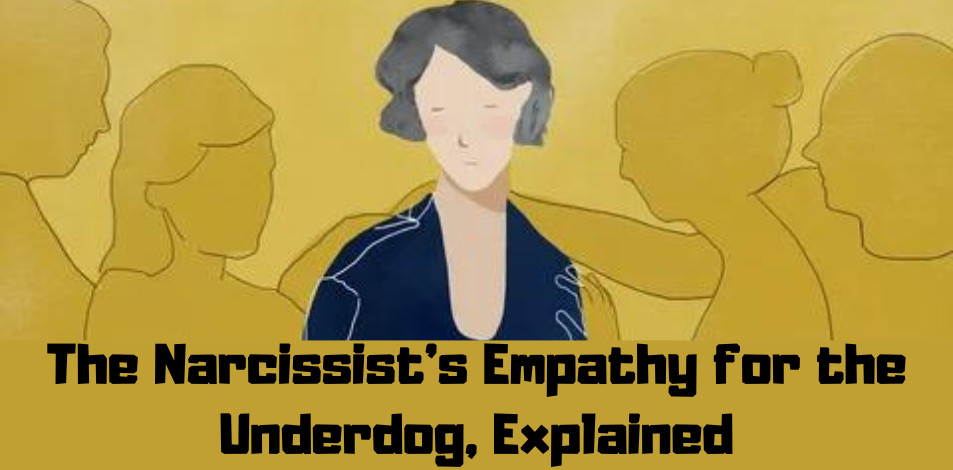
Key Points
Narcissistic traits exist on a spectrum, from having a few traits to a full-blown disorder.
It is a myth that narcissists have no empathy at all.
Narcissists are highly selective in how and when they show the limited empathy they do have.
If the narcissist’s code of behavior were consistent, far fewer people close to him or her would feel the need to seek out self-help resources to cope.
Before explaining how the interpersonal dynamics of a narcissist work, it is important to clarify the diagnostic basis for the behavior. Narcissism refers to a specific personality type that is disturbed, with a deficit in empathy and an exaggerated self-image. While narcissistic personality exists on a spectrum, the full-blown disorder is defined as narcissistic personality disorder in the Diagnostic and Statistical Manual of Mental Disorders (5th ed.; DSM-5; American Psychiatric Association, 2013). It is important to note that while most narcissistic individuals may display some of the criteria for the disorder, many will not have the full disorder.
Considering one trait of the narcissistic personality—a lack of empathy—highlights how inconsistent and unpredictable a narcissist’s behavior toward others can be. In particular, the way a narcissist treats others is notoriously inconsistent, a fact that confuses those close to the narcissist at work or in their personal lives.
A narcissist often uses a fluctuating set of social rules when deciding how to treat another person. For example, a narcissist may treat one individual well but treat another poorly. How does a narcissist decide how to treat someone? Does he or she adhere to a fixed moral code of apologizing to anyone when they have done something hurtful? Does he or she avoid lying or being cruel to anyone they encounter, knowing that such behavior is wrong?
Anyone who has been in frequent proximity to a narcissist knows that a narcissist’s behavior is defined by ambivalence, or constantly shifting reality and moral rules. A narcissist’s treatment of others is not fixed and derived from a basic set of principles of what is right and wrong ways to treat others but rather is determined by the narcissist’s need to present himself or herself in a certain light (e.g., powerful, virtuous, victim).
The basis of how an individual treats another is directly related to empathy, including the amount of empathy one feels toward the other. A common myth about narcissists is that they do not empathize with others. It is not accurate to say that narcissists do not empathize with others at all; rather, it is accurate to say that narcissists have limited empathy and that narcissists are very selective in how and when they show the limited empathy they do have. For context, adult narcissists have been socialized and have experienced empathy among others throughout their lives, so narcissists typically develop traces of empathy. The problem is that the empathy is not deep or consistent, which causes problems at work and in personal relationships.
Love for the Underdog and Hatred for the Superior
When narcissists feel or show empathy for others, what types of people do they find most empathy appealing? What types of fortunate individuals are the recipients of their kindness and compassion? When narcissists exercise empathy, they often show it to individuals they perceive as weak or inferior in some way. For example, a narcissist may reserve the kindest behavior for a disabled or elderly person. They may have empathy for individuals who are in physical or emotional pain, including those who have experienced a traumatic or disturbing life event.
It is important to note that narcissists may allow themselves to have some empathy for these individuals because these individuals are not seen as threatening to the narcissist’s ego; they do not evoke in the narcissist the sense of competition that drives their behavior.
The individuals for whom narcissists feel little or no empathy are those who have something that the narcissist craves—this varies from narcissist to narcissist. A particular image is what the narcissist craves more than anything else, and it could be someone who is financially wealthy, incredibly loved, or physically beautiful, among other things. Individuals who embody this narcissist’s dream trait are seen as extremely threatening to the narcissist’s ego, as narcissists operate from a scarcity mindset that simply says there is not enough attention and admiration for everyone. Their modus operandi when it comes to attention and appreciation is: grab and devour.
What Motivates a Narcissist
Ultimately, the attention that another person receives is one of the narcissist’s most important emotional motivators. When a narcissist sees a talented, lovable person being appreciated for being special, the feeling of exhaustion is more than the narcissist can handle. Because the narcissist sees this respected individual as a “winner” or “gets it all,” he or she is no longer able to see the individual as a real person with their own set of positive and negative emotions, or their history of emotional triumphs and losses. In short, the narcissist cannot summon even the slightest bit of empathy for the very individuals they perceive as a threat.
Finally, the most important thing to understand about the narcissist’s selective and inconsistent empathy is that showing empathy and compassion is almost entirely dependent on their fragile ego. If one wants to feel emotionally safe in the company of a narcissist, they will be safest if they demand less and support the narcissist so that the narcissist can hold on to their self-image which they value above all else.




